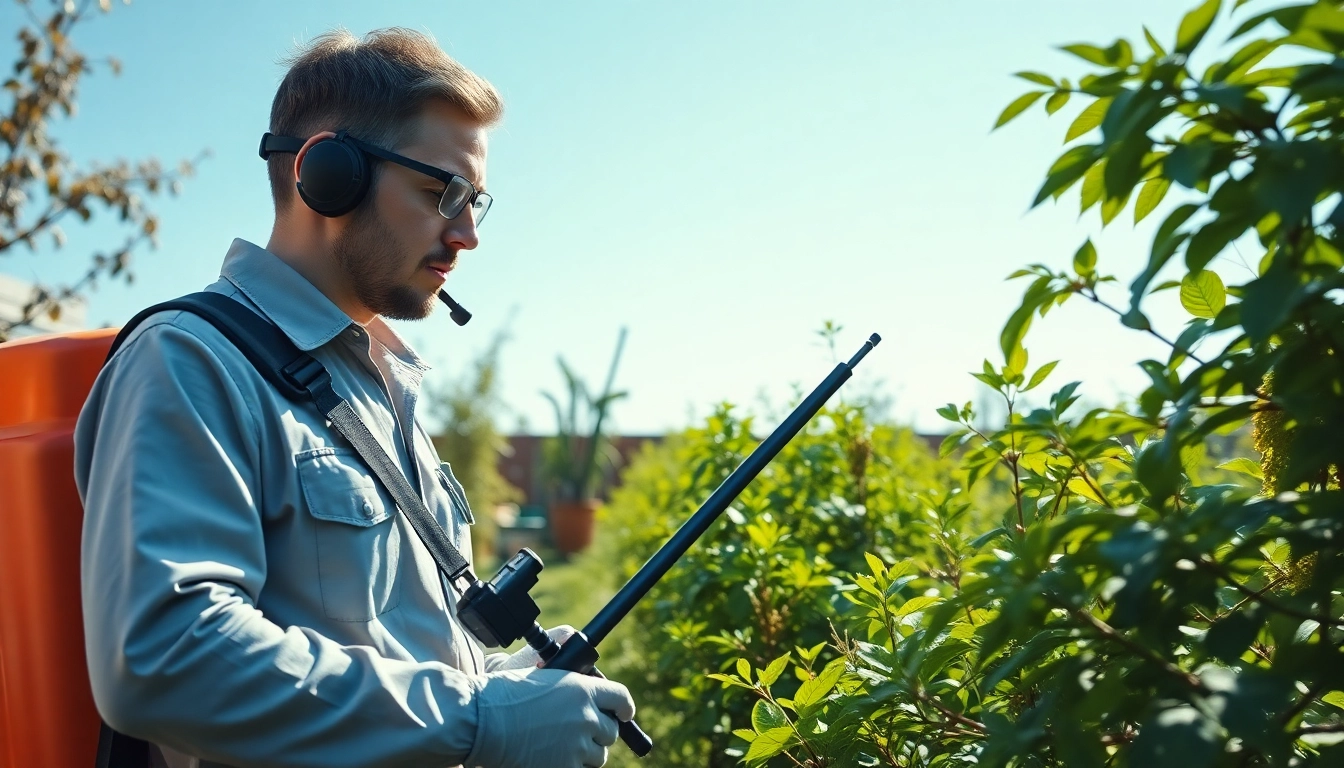Understanding Pest Management
Pest management is the practice aimed at controlling and minimizing the impact of pests that threaten human health, property, and ecosystem integrity. As urbanization and agriculture continue to expand, effective pest management has become an essential component for maintaining a healthy environment. This article delves into various pest management strategies, focusing on Integrated Pest Management (IPM), pest identification, monitoring techniques, preventive measures, and evaluating success to ensure lasting pest control solutions.
Definition and Importance of Pest Management
Pest management refers to the systematic approach to controlling pests, including insects, rodents, and other animals that can cause damage to crops, structures, and human health. It is essential because pests can lead to significant financial losses in agriculture, harm public health, and disrupt the natural ecosystem.
Proper pest management not only protects physical assets but also enhances the quality of life by reducing the risk of diseases associated with pests, improving food security through effective crop protection, and fostering a healthier living environment. By integrating various control measures, pest management seeks to achieve a balance between pest reduction and environmental conservation.
Common Types of Pests
Various pests can be classified based on their impact on human activities. Some of the most common types include:
- Insects: This group includes ants, cockroaches, termites, and mosquitoes that can damage crops and transmit diseases.
- Rodents: Rats and mice can contaminate food supplies, damage property, and pose health risks.
- Weeds: Unwanted plants that compete with crops for nutrients, water, and sunlight, impacting agricultural yields.
- Pathogens: Fungi, bacteria, and viruses that can cause diseases in plants and animals.
- Wildlife: Such as raccoons and deer, which can damage gardens and agriculture.
Pest Management Techniques and Tools
The effectiveness of pest management hinges on the selection and application of appropriate control techniques and tools. Strategies can be grouped into three main categories: preventive measures, control measures, and eradication methods.
Preventive measures include habitat manipulation, where conditions are altered to make them less conducive to pests; cultural practices like crop rotation; and mechanical barriers such as nets to deter pests.
Control measures often involve physical, biological, or chemical means. Physical methods include traps and exclusion tactics, while biological control incorporates the use of natural predators or parasites to manage pest populations. Chemical control involves the application of pesticides, which must be used judiciously to minimize harm to beneficial organisms and human health.
Eradication methods aim for complete removal of pests and, while effective in some cases, they can lead to ecological imbalances if not carefully managed.
Integrated Pest Management (IPM)
Principles of Integrated Pest Management
Integrated Pest Management (IPM) is a holistic approach that combines multiple strategies to manage pests effectively while minimizing environmental impacts. The key principles of IPM include:
- Prevention: Fostering conditions unfavorable for pest establishment.
- Monitoring: Regularly checking for signs of pests to make informed decisions.
- Thresholds: Identifying acceptable levels of pest population before taking action.
- Management Options: Employing a variety of control methods ranging from cultural to chemical interventions.
- Evaluation: Assessing the effectiveness of pest management tactics and adapting as necessary.
Benefits of IPM
The implementation of IPM offers numerous advantages:
- Environmental Sustainability: IPM promotes the use of less toxic alternatives and reduces reliance on chemical pesticides, thereby lessening the environmental footprint of pest control.
- Economic Savings: Reducing pest-related losses and minimizing pesticide expenses leads to cost savings for agricultural producers and households alike.
- Public Health Protection: IPM strategies mitigate the risks associated with chemical exposure, contributing to safer living environments.
- Ecosystem Balance: By promoting biological control and biodiversity, IPM fosters a healthier ecosystem and reduces the negative impacts of monoculture.
Components of an IPM Program
An effective IPM program should have the following components:
- Risk Assessment: Evaluating environmental, economic, and health risks associated with pest presence.
- Pest Identification: Accurately identifying pest species to tailor control measures effectively.
- Action Plans: Developing strategic plans based on monitoring data and determined thresholds.
- Implementation: Deploying chosen pest management tactics while ensuring compliance with regulations.
- Documentation and Reporting: Keeping records of pest occurrences, management decisions, and results to guide future actions.
Pest Identification and Monitoring
How to Identify Pests
Identifying pests accurately is crucial for effective management. Here are steps to aid in pest identification:
- Observation: Look for signs of pest activity such as droppings, chewed materials, or the presence of live pests.
- Research: Utilize guides, databases, or contact local extension services to confirm pest species.
- Sampling: Collect samples of suspected pests for identification through trap catches or sticky boards.
Monitoring Techniques for Effective Pest Control
Monitoring is essential to determine pest population dynamics and inform management decisions. Effective monitoring techniques include:
- Visual Inspections: Regular walkthroughs to observe pest signs and infestations.
- Trap Deployment: Using traps to capture pests and estimate population levels.
- Record Keeping: Maintaining logs of pest sightings, environmental conditions, and actions taken.
- Sampling Methods: Utilizing tools like pitfall traps or sweepnets for quantitative assessment.
When to Seek Professional Help
Professional pest control services may be needed when:
- Pests are identified that pose severe health risks.
- Infestations are widespread or attacking sensitive areas such as food storage or healthcare facilities.
- Target species require specialized methods or pesticides that are not available to the general public.
- The situation demands more advanced monitoring and documentation.
Preventive Measures in Pest Management
Cultural Practices to Prevent Pests
Cultural practices involve modifying farming and landscaping habits to make environments less inviting to pests. Techniques include:
- Crop Rotation: Changing types of crops grown in an area each season to disrupt pest life cycles.
- Soil Management: Maintaining healthy soil to promote robust plant health and resistance to pests.
- Proper Sanitation: Cleaning areas to remove debris where pests may thrive.
Physical Barriers and Traps
Physical barriers can be highly effective in pest management, preventing access to vulnerable areas. Common techniques include:
- Exclusion: Sealing entry points, such as cracks and gaps in buildings, to block pest access.
- Netting: Covering plants or crops to protect them from flying pests.
- Traps: Utilizing sticky traps, bait traps, and pheromone traps to catch and monitor pest populations.
Environmental Management for Pest Prevention
Creating an environment less conducive to pest activity is paramount. Effective environmental management techniques include:
- Water Management: Ensure proper drainage to prevent standing water that attracts mosquitoes.
- Plant Selection: Opt for native or pest-resistant plants in landscaping.
- Wildlife Management: Balance local wildlife populations to reduce pest pressures by encouraging natural predators.
Evaluating Pest Management Success
Measuring Effectiveness of Pest Control Measures
Evaluating pest management strategies is vital to understand their effectiveness. Key metrics may include:
- Pest Population Levels: Reductions in pest numbers after implementing control measures.
- Damage Assessments: Changes in the level of damage to crops or property over time.
- Cost-Effectiveness: Analyzing expenses against the benefits gained from pest management efforts.
Adjusting Strategies Based on Results
Continuous improvement is essential in pest management. Adjustments based on evaluation results can involve:
- Changing control tactics that have proven ineffective.
- Incorporating new knowledge or technologies to enhance pest management programs.
- Engaging stakeholders for feedback and collaboration on pest management goals.
Long-term Sustainability in Pest Management
Advocating for sustainable pest management entails considering long-term environmental impacts. Strategies may include:
- Using Organic Methods: Favoring organic pest control options to reduce chemical use.
- Promoting Biodiversity: Encouraging a variety of plants and beneficial organisms to strengthen ecosystem resilience.
- Educating Stakeholders: Offering information and training to farmers and residents about best practices in pest management.



